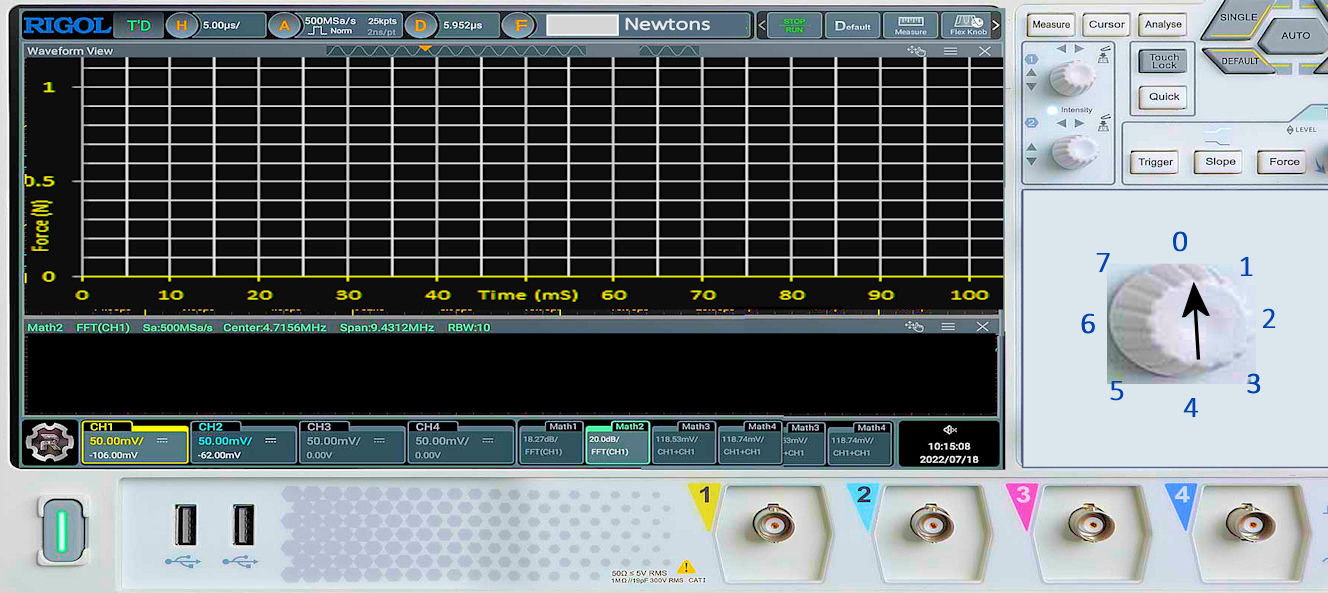In yesteryear, physiology classes used frogs as animal models to study concepts such as nerve conduction and muscle contraction. A common lab that was done was to isolate the sciatic nerve and gastrocnemius muscle of a frog. Then the frog muscle was stimulated and the contraction force was measured. First single stimuluses were used to observe threshold (minimum voltage to contract) and muscle recruitment. Then multi stimuli were used to observe summation, treppe, and tetanus. Unfortunately, the frog doesn't recover from this experiment. Therefore, we are going to travel years in the past to the Battlestar Galactica where Dr. Spock is experimenting on a frog ( picture right) with regenerative and self-healing powers. (And yes, the person who wrote that is going to burn in hell).
In this first part, we are going to look at single stimuli on the oscilloscope below. We will begin by clicking 0 volts which should result in a straight line. We will then increase the voltage until we reach threshold for that muscle and a single twitch contraction occurs. Lastly, we will continue to increase voltage to recruited more and more fibers until the all the fibers of that muscle contract.
The top part of the oscilloscope shows force (y axis) in Newtons over time (x axis) in milliseconds. The bottom is showing when the stimulus occurs. In addition to recording the force in Newtons (top of oscilloscope) you will have to calculate the latent period. That is the period from the stimulus until the contraction occurs.
Click on the voltage on the oscilloscope dial below. Find the latent period and force. (Again, force is give, latent period you have to figure out from reading the screen.) The frog muscle will also not respond at first because the voltage is a subthreshold voltage.

